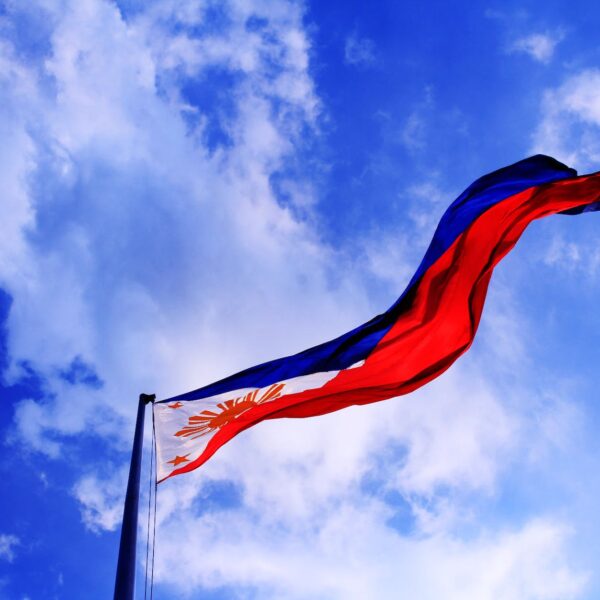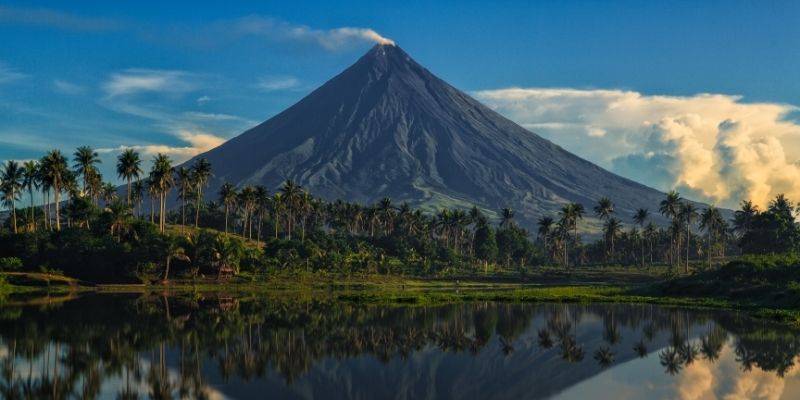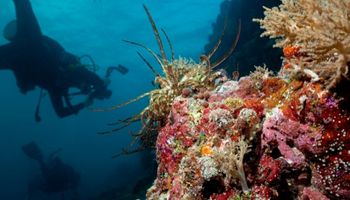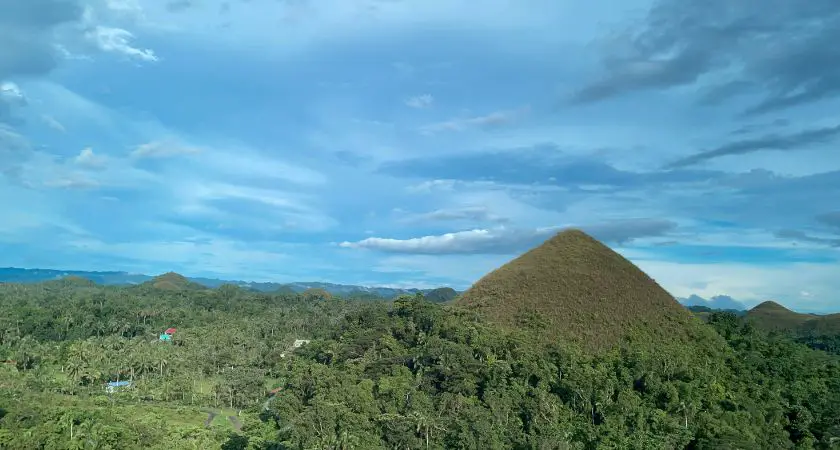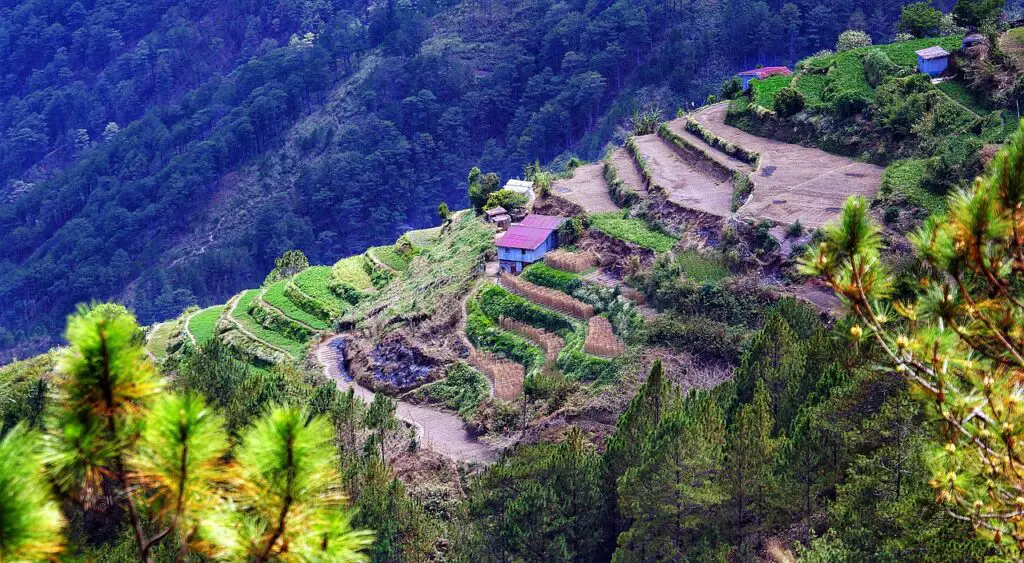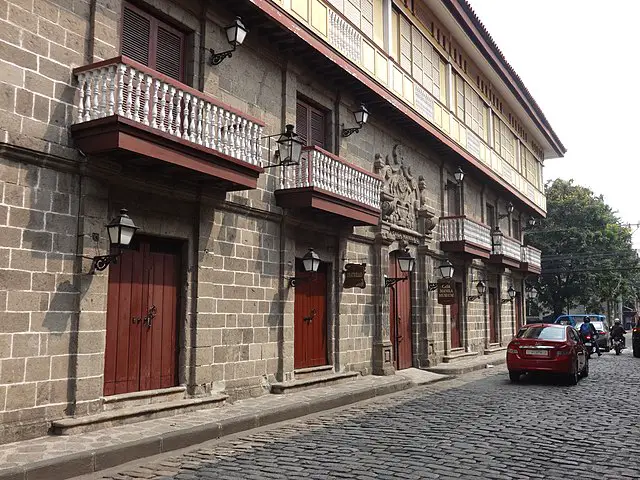The Philippines offers a plethora of incredible experiences and attractions, making it a must-visit destination for travelers seeking adventure, relaxation, and natural beauty. From pristine beaches and stunning islands to historical sites and vibrant cities, this tropical paradise has something for everyone.
Key Takeaways:
- Discover the diverse natural wonders of the Philippines, from enchanting waterfalls to unique wildlife encounters.
- Immerse yourself in the rich history and cultural heritage of the country, exploring ancient ruins and vibrant festivals.
- Embark on thrilling adventure activities like surfing, diving, and hiking in the Philippines’ breathtaking landscapes.
- Indulge in the delicious and diverse Filipino cuisine, savoring iconic dishes and exploring local markets.
- Unwind on idyllic beaches, soaking up the sun and enjoying the tranquil beauty of the Philippine coastline.
Whether you’re a nature lover, an adventure enthusiast, a history buff, or a foodie, the Philippines has something to offer. Join us as we embark on an ultimate guide to the 101 best things to do in this tropical paradise, unveiling hidden gems and unforgettable experiences along the way.
Why Visit the Philippines?
With its breathtaking landscapes, rich cultural heritage, and warm-hearted locals, the Philippines is a dream destination that promises unforgettable experiences. Whether you’re seeking pristine beaches, vibrant cities, or thrilling adventures, this Southeast Asian gem has it all. Let’s explore why the Philippines should be at the top of your travel bucket list.
Natural Wonders
The Philippines is blessed with an abundance of natural wonders that will leave you in awe. From the world-renowned Chocolate Hills in Bohol to the captivating Underground River in Palawan, the country offers a variety of stunning landscapes to explore. Don’t miss the magnificent Banaue Rice Terraces, often referred to as the Eighth Wonder of the World, and the enchanting Tubbataha Reefs Natural Park, a UNESCO World Heritage Site that boasts some of the world’s most diverse marine life.
Cultural Heritage
Immerse yourself in the rich cultural heritage of the Philippines by visiting historical sites, religious landmarks, and attending vibrant festivals. Explore the centuries-old churches in Intramuros, Manila, and marvel at the intricate carvings of the Ifugao Rice Terraces. Experience the colorful traditions of the Ati-Atihan Festival in Kalibo or witness the grandeur of the Sinulog Festival in Cebu. The Philippines’ cultural tapestry is as diverse as its people, offering a truly unique and immersive experience.
Gastronomic Delights
No visit to the Philippines is complete without indulging in its vibrant and flavorful cuisine. From the signature dish of adobo, a savory combination of meat and soy sauce, to the refreshing halo-halo dessert, Filipino food will tantalize your taste buds. Embark on a food adventure and sample street food like balut, a boiled duck embryo, or explore local markets where you can savor fresh seafood and tropical fruits. The Philippines is a food lover’s paradise, promising a culinary journey like no other.
| Highlights of Visiting the Philippines | Website |
|---|---|
| Explore the stunning beaches and crystal-clear waters | www.philippinebeachholiday.com |
| Discover the rich history and cultural heritage | www.culturalheritageph.com |
| Experience thrilling adventures in breathtaking landscapes | www.adventurephilippines.com |
Essential Travel Tips for the Philippines
Before embarking on your Philippine adventure, it’s essential to be well-prepared with these practical travel tips and advice. The Philippines offers a diverse range of experiences, from idyllic beaches to thrilling adventure activities, but it’s important to be aware of certain aspects to ensure a smooth and enjoyable trip.
Firstly, it’s recommended to pack lightweight and breathable clothing, as the Philippines has a tropical climate with high humidity. Don’t forget to bring sunscreen, insect repellent, and a reusable water bottle to stay hydrated throughout your travels. Depending on the activities you plan to undertake, it’s also advisable to pack swimwear, hiking shoes, and comfortable walking sandals.
When it comes to transportation, the Philippines has various options depending on your destination. Public transportation, such as buses and jeepneys, is a common and affordable way to get around. However, if you prefer more convenience and flexibility, consider hiring a private driver or renting a car. It’s important to note that traffic conditions can be congested, especially in major cities, so allow extra time for travel.
| Travel Tips: | Additional Information: |
|---|---|
| Research local customs and traditions | Respect for the culture and traditions of the Philippines is highly valued. |
| Stay informed about potential weather hazards | The Philippines is prone to typhoons and tropical storms, so check weather forecasts and heed local advisories. |
| Be cautious of your belongings | Take necessary precautions to protect your valuables, especially in crowded areas and tourist hotspots. |
| Stay alert and aware of your surroundings | While the majority of locals are friendly and welcoming, it’s always important to exercise caution and be aware of your surroundings, especially in unfamiliar areas. |
Lastly, it’s advisable to have travel insurance that covers medical expenses and emergency evacuation. The Philippines has excellent healthcare facilities in major cities, but it’s always better to be prepared for any unforeseen circumstances. It’s also recommended to carry a photocopy of your passport and other important documents while keeping the originals stored in a safe place. Additionally, inform your bank about your travel plans to avoid any issues with accessing funds.
By following these essential travel tips, you’ll be well-equipped to navigate the Philippines and make the most of your adventure. Remember to stay open-minded, embrace the rich culture, and immerse yourself in the beauty that this tropical paradise has to offer.
Island Hopping in the Philippines
Discover the unparalleled beauty of the Philippine islands through an unforgettable island-hopping adventure, where crystal-clear waters, white sandy beaches, and vibrant marine life await. With over 7,000 islands to explore, each offering its own unique charm and attractions, island hopping in the Philippines is a must-do experience for travelers seeking tropical paradise.
From the stunning limestone cliffs of Palawan to the vibrant nightlife of Boracay, the Philippines is a haven for beach lovers and adventure enthusiasts alike. Embark on a journey across the archipelago and immerse yourself in the natural wonders that await at every turn.
Whether you choose to relax on pristine beaches, dive into colorful coral reefs, or kayak through hidden lagoons, each stop on your island-hopping itinerary will leave you in awe. Marvel at the Tubbataha Reefs Natural Park, a UNESCO World Heritage Site famous for its diverse marine life, or explore the enchanting lagoons of El Nido, where towering limestone formations create a breathtaking backdrop.
To make the most of your island-hopping adventure, plan your itinerary carefully and consider guided tours that offer expert knowledge and local insights. With a well-planned route, you can experience the best of what the Philippines has to offer, from iconic destinations to hidden gems off the beaten path.
| Islands to Visit | Highlights |
|---|---|
| Palawan | Underground River, El Nido’s lagoons, Coron’s shipwrecks |
| Boracay | White Beach, Puka Shell Beach, Bulabog Beach for kiteboarding |
| Siargao | Cloud 9 surf spot, rock pools, Magpupungko Beach |
“Island hopping in the Philippines offers a unique opportunity to explore some of the most beautiful and diverse islands in the world.” – Traveler
Planning Your Island-Hopping Adventure
Before embarking on your island-hopping adventure in the Philippines, there are a few things to keep in mind:
- Research and choose the islands that align with your interests and preferences.
- Consider the best time to visit each destination, taking into account weather conditions and peak tourist seasons.
- Book accommodations and transportation in advance to secure the best deals.
- Learn about the local customs and traditions to show respect for the communities you’ll be visiting.
- Pack essentials such as sunscreen, insect repellent, and appropriate clothing for various activities.
By following these tips and embracing the spirit of adventure, you’ll create memories to last a lifetime as you hop from one stunning island to another in the Philippines.
Discovering Nature’s Wonders in the Philippines
Immerse yourself in nature’s wonders as you explore the Philippines’ awe-inspiring landscapes, from majestic waterfalls to dramatic limestone cliffs. With its diverse natural attractions, the country offers a paradise for nature enthusiasts and adventure seekers alike.
Start your journey by visiting the enchanting waterfalls scattered throughout the Philippines. Kawasan Falls in Cebu boasts crystal-clear turquoise waters surrounded by lush greenery, offering a breathtaking sight. Tinago Falls in Iligan City is a hidden gem tucked away in a deep ravine, accessible only through a thrilling trek. Marvel at the cascading waterfall as it plunges into a tranquil pool, creating a picturesque backdrop for your adventures.
For those who crave more adrenaline, explore the dramatic limestone formations and caves that dot the Philippine archipelago. The Underground River in Palawan is a UNESCO World Heritage Site and is considered one of the New 7 Wonders of Nature. Embark on a boat tour through the cave river system, marveling at its pristine beauty and unique rock formations. Don’t forget to look up and spot the colony of swiftlets that call this cave home.
| Must-Visit Natural Attractions in the Philippines |
|---|
| 1. Kawasan Falls, Cebu |
| 2. Tinago Falls, Iligan City |
| 3. The Underground River, Palawan |
“The Philippines’ natural wonders are truly awe-inspiring. From the stunning waterfalls to the breathtaking limestone cliffs, every corner of the country offers something extraordinary for nature lovers.” – Traveler’s Journey
Unleash your adventurous spirit by exploring the unique flora and fauna in the Philippines. Mount Pulag in Luzon is renowned for its sea of clouds, offering a mesmerizing sunrise experience as you hike to its peak. Strap on your hiking boots and challenge yourself to reach the summit, where the panoramic views of the surrounding mountains and landscapes will leave you in awe.
As you immerse yourself in nature’s wonders in the Philippines, keep in mind that recent events may affect the availability of certain activities and locations. Stay updated with the latest travel advisories and connect with local guides to ensure a safe and enjoyable experience.
Recommended Nature Activities:
- Chasing waterfalls and taking a refreshing dip in their pools.
- Exploring caves and admiring their unique formations.
- Hiking to the summits of mountains for breathtaking views.
- Spotting diverse wildlife and unique plant species.
Embark on a journey of natural discovery in the Philippines and marvel at the breathtaking landscapes that await you. With its stunning waterfalls, mesmerizing caves, and captivating mountain vistas, the country is a true haven for nature enthusiasts.
Exploring Historical Sites and Cultural Heritage
Delve into the Philippines’ rich past and vibrant culture as you visit historical sites that whisper tales of a bygone era and witness colorful festivals that celebrate the nation’s traditions. Whether you’re an avid history buff or simply interested in immersing yourself in the local culture, the Philippines offers a plethora of captivating experiences that will leave you in awe.
Historical Sites
Step back in time as you explore the country’s historical sites, where remnants of Spanish colonial rule and ancient civilizations await. Discover the majestic ruins of Intramuros, the walled city in Manila, and immerse yourself in its cobblestone streets, centuries-old churches, and colonial architecture. Visit the UNESCO World Heritage Site of Vigan, a charming city that preserves its Spanish colonial past, with its well-preserved heritage houses and cobblestone streets.
Experience the wonder of ancient civilizations at historic landmarks like the Banaue Rice Terraces, often referred to as the “Eighth Wonder of the World.” These terraces, carved into the mountains by the Ifugao people over 2,000 years ago, are a testament to their advanced engineering skills and sustainable farming practices.
Cultural Festivals
Immerse yourself in the vibrant cultural tapestry of the Philippines by attending one of its many festivals. From the colorful Panagbenga Festival in Baguio, where streets are adorned with extravagant floral floats, to the lively Ati-Atihan Festival in Kalibo, where revelers paint their faces with traditional tribal patterns, each festival offers a unique glimpse into the nation’s traditions.
Experience the grandeur of the Sinulog Festival in Cebu, a religious and cultural celebration that attracts thousands of devotees and tourists alike. Join the lively street procession and witness the mesmerizing performances of dancers in colorful costumes as they pay homage to the Santo Niño, the country’s patron saint.
| Historical Sites | Cultural Festivals |
|---|---|
|
|
“Visiting the historical sites of the Philippines and immersing in its vibrant festivals is like stepping into a time machine and witnessing the rich tapestry of its past and present.” – Travel Enthusiast
With its fascinating historical sites and vibrant cultural heritage, the Philippines offers a treasure trove of experiences for travelers seeking to uncover the nation’s past and immerse themselves in its traditions. From exploring ancient ruins to joining colorful festivals, each encounter will leave you with a deeper appreciation for the country’s rich history and cultural diversity.
Thrilling Adventure Activities in the Philippines
Experience the thrill of a lifetime as you engage in heart-pounding adventure activities that highlight the Philippines’ natural playground. From towering mountains to crystal-clear waters, this tropical paradise offers endless opportunities for adrenaline junkies and outdoor enthusiasts.
Embark on a thrilling spelunking adventure in the underground river of Puerto Princesa, where you can marvel at stunning stalactite formations and navigate through mystical caves. Want to conquer the waves? Head to Siargao, known as the surfing capital of the Philippines, and ride the barrels of Cloud 9, one of the world’s best surf breaks.
| Activity | Description |
|---|---|
| Diving in Tubbataha Reef | Explore the UNESCO World Heritage Site of Tubbataha Reef, home to vibrant coral reefs and a plethora of marine life including sea turtles, sharks, and manta rays. |
| Zip-lining in Dahilayan Forest Park | Soar through the lush greenery of Dahilayan Forest Park on an exhilarating zip-lining adventure, taking in breathtaking views of the surrounding mountains. |
| White-water rafting in Cagayan de Oro | Challenge yourself with an action-packed white-water rafting experience along the rapids of Cagayan de Oro’s mighty river, perfect for thrill-seekers. |
If you’re a nature lover, hiking enthusiasts will find their paradise in Mount Pulag, the highest peak in Luzon, where stunning vistas and a sea of clouds await. For a more challenging climb, Mount Apo in Mindanao offers a rewarding adventure as the tallest mountain in the Philippines.
Whether you’re diving into the depths of the ocean, soaring through the trees, or conquering majestic mountains, the Philippines is a playground for adventure seekers. So, grab your gear, buckle up, and get ready for an adrenaline rush like no other!
Embark on a gastronomic journey through the flavors of the Philippines, where vibrant and savory dishes await your taste buds. Filipino cuisine is a reflection of the country’s rich cultural heritage, blending indigenous flavors with influences from China, Spain, and America. From mouthwatering adobo to hearty sinigang, the Philippines offers a diverse range of culinary delights that are sure to satisfy any food lover.
One of the must-try dishes in the Philippines is adobo, a savory concoction of meat (usually pork or chicken) marinated in vinegar, soy sauce, garlic, and spices. This dish is a staple in Filipino households and showcases the perfect balance of flavors. The tender and flavorful meat, combined with the tangy and savory sauce, makes adobo a crowd favorite.
Another iconic Filipino dish is sinigang, a sour soup made with tamarind as the base flavor. This comforting dish is usually cooked with pork, shrimp, or fish, and is packed with an assortment of vegetables. The tangy broth and tender meat, paired with the freshness of the vegetables, create a delightful medley of flavors that perfectly complement each other.
To truly explore Filipino cuisine, venture into the local markets known as “palengke.” These bustling marketplaces are filled with a wide variety of fresh produce, seafood, and spices. You can find an array of unique ingredients that form the foundation of Filipino dishes. Interact with the friendly vendors, learn about traditional cooking techniques, and discover the vibrant colors and aromas of Filipino cuisine.
For a true culinary adventure, make sure to try the street food in the Philippines. From grilled skewers of pork or chicken known as “inasal” to the famous balut, a fertilized duck embryo, street food offers a taste of the authentic flavors and textures loved by locals. Don’t be afraid to indulge in these delicious bites as you wander through the vibrant streets of the Philippines.
In summary, Filipino cuisine is a treasure trove of flavors and textures that will captivate your taste buds. From the iconic adobo and sinigang to the exciting street food scene, the Philippines offers a culinary experience that is both diverse and delicious. So, immerse yourself in the vibrant world of Filipino cuisine and savor the unique flavors that this tropical paradise has to offer.
| Dish | Description |
|---|---|
| Adobo | A savory dish of meat marinated in vinegar, soy sauce, garlic, and spices. |
| Sinigang | A sour soup made with tamarind as the base flavor, cooked with meat and vegetables. |
| Inasal | Grilled skewers of pork or chicken, often marinated in a flavorful blend of spices. |
| Balut | A fertilized duck embryo, boiled and eaten as a popular street food. |
Relaxing Beach Escapes in the Philippines
Unwind and embrace the laid-back island life as you discover the Philippines’ most stunning beach destinations, where paradise seems to be within reach. With its pristine stretches of sand, crystal-clear waters, and breathtaking sunsets, the Philippines offers a tropical getaway like no other. Whether you’re seeking solitude or a vibrant beach scene, this archipelago has it all.
From the world-famous white sands of Boracay to the secluded coves of Palawan, the Philippines boasts a diverse range of beach experiences. Here, you can relax on powdery beaches framed by lush palm trees or dive into vibrant underwater worlds teeming with marine life. Whether you’re a sun seeker, an adventurer, or a nature lover, the Philippines has the ideal beach escape for you.
Top Beach Destinations in the Philippines
- Boracay Island – Famous for its powdery white sand and vibrant nightlife, Boracay is a must-visit for beach lovers.
- El Nido, Palawan – Known for its stunning limestone cliffs, secret lagoons, and pristine beaches, El Nido is a paradise for nature enthusiasts.
- Siargao Island – Dubbed the “Surfing Capital of the Philippines,” Siargao offers world-class waves and a laid-back beach vibe.
- Panglao Island, Bohol – Home to Alona Beach, Panglao Island is a popular destination for diving and snorkeling enthusiasts.
These beach destinations are just the tip of the iceberg. The Philippines is blessed with numerous other gems, each offering a unique beach experience. Whether you’re lounging on the shores of Palawan or exploring the vibrant coral reefs of Cebu, the Philippines’ beach escapes are sure to leave you in awe.
| Beach Destination | Features |
|---|---|
| Boracay Island | White sand beaches, crystal-clear waters, vibrant nightlife |
| El Nido, Palawan | Limestone cliffs, secret lagoons, pristine beaches |
| Siargao Island | World-class surfing waves, laid-back beach vibe |
| Panglao Island, Bohol | Diving and snorkeling opportunities, vibrant marine life |
When it comes to beach escapes, the Philippines offers a paradise that is both stunning and diverse. So pack your swimsuit, grab your sunscreen, and get ready to embark on an unforgettable journey to the country’s most breathtaking beach destinations.
Exploring Vibrant Cities and Urban Experiences
Immerse yourself in the energetic pulse of the Philippines’ vibrant cities, where modernity meets tradition, and urban adventures await at every corner. From bustling metropolises to charming historic districts, the country’s urban landscape offers a rich tapestry of experiences that are sure to captivate any traveler.
One must-visit city is Manila, the capital of the Philippines. This vibrant metropolis is a melting pot of cultures, featuring a mix of Spanish colonial architecture, modern skyscrapers, and bustling markets. Explore the historic district of Intramuros, known for its well-preserved Spanish-era buildings, cobblestone streets, and beautiful churches. Don’t miss the National Museum of the Philippines, which houses a vast collection of art and artifacts that showcase the country’s rich history.
Another city worth exploring is Cebu. Known as the Queen City of the South, Cebu offers a blend of urban attractions and natural wonders. Visit the iconic Magellan’s Cross, a Christian cross planted by the Portuguese explorer Ferdinand Magellan in 1521. Explore the vibrant nightlife of Mango Avenue, where bars, clubs, and restaurants come to life after dark. For a dose of nature, take a trip to the nearby island of Mactan and indulge in water activities like snorkeling and diving.
| City | Attractions |
|---|---|
| Manila | Intramuros, National Museum, Manila Bay |
| Cebu | Magellan’s Cross, Mango Avenue, Mactan Island |
When exploring these vibrant cities, make sure to savor the local cuisine. The Philippines is known for its delicious street food, and cities like Manila and Cebu offer an array of culinary delights. Try the famous Filipino dish adobo, a flavorful combination of soy sauce, vinegar, and spices. Indulge in fresh seafood at seaside restaurants, or sample the diverse street food offerings, such as balut (boiled duck embryo) or isaw (grilled chicken intestines).
With their mix of modernity and cultural heritage, the vibrant cities of the Philippines are a must-visit for travelers seeking a dynamic urban experience. Explore the bustling streets, immerse yourself in the local culture, and discover the hidden gems that make each city unique.
Complete Table:
| City | Attractions |
|---|---|
| Manila | Intramuros, National Museum, Manila Bay |
| Cebu | Magellan’s Cross, Mango Avenue, Mactan Island |
Experiencing Cultural Immersion and Community-based Tourism in the Philippines
Go beyond the surface and engage in meaningful cultural experiences that allow you to connect with the local communities and leave a positive impact. The Philippines is a country rich in diverse cultures and traditions, offering numerous opportunities for cultural immersion and community-based tourism. Whether you’re staying in a traditional homestay, participating in indigenous craft workshops, or joining local festivals and celebrations, there are endless ways to fully experience the authentic culture of the Philippines.
One way to immerse yourself in the local culture is by participating in community-based tourism initiatives. These programs allow travelers to interact with the local communities, learn about their customs, and contribute to sustainable development. From volunteering in conservation projects to supporting local artisans, you can make a difference while experiencing the true essence of Filipino culture. By supporting community-based tourism, you not only gain a deeper understanding of the country, but also help to preserve its heritage for future generations.
When exploring the Philippines, don’t miss the opportunity to visit indigenous communities and learn about their way of life. Many tribes welcome visitors and offer cultural activities such as traditional dance performances, handicraft demonstrations, and storytelling sessions. These encounters provide a unique glimpse into the indigenous traditions that have been passed down through generations. It’s an opportunity to learn from the locals, share experiences, and foster cultural exchange.
Community-Based Tourism in the Philippines
| Destination | Activities | Impact |
|---|---|---|
| Batanes | Hiking, staying in traditional stone houses, participating in weaving workshops | Supporting sustainable tourism, preserving local traditions |
| Sagada | Exploring ancient burial caves, joining community-led eco-tours, tasting traditional cuisine | Preserving cultural heritage, promoting responsible travel |
| Siquijor | Visiting local healers, attending folk healing and spiritual ceremonies | Reviving and preserving traditional healing practices, empowering local communities |
By immersing yourself in the cultural traditions of the Philippines, you gain a deeper appreciation for the country and its people. Cultural immersion not only enriches your travel experience but also allows you to make a positive impact on the communities you visit. So, go ahead and embark on a journey of cultural discovery in the Philippines, where every interaction and experience will leave lasting memories and forge connections that transcend borders.
Unexpected Gems and Hidden Gems in the Philippines
Escape the crowds and embark on a journey of exploration as you discover hidden gems and unexpected treasures that showcase the Philippines’ undiscovered beauty. While popular destinations like Palawan and Boracay offer stunning beaches and abundant tourist activities, there are lesser-known places that offer a more unique and off-the-beaten-path experience.
One such hidden gem is the province of Batanes, located in the northernmost part of the Philippines. Known for its breathtaking landscapes, Batanes is home to rolling hills, rugged cliffs, and charming stone houses. Visitors can enjoy hiking the picturesque Mount Iraya, exploring the centuries-old stone forts, and immersing themselves in the rich Ivatan culture.
Another hidden gem is the mystical island of Siquijor. Often referred to as the “Island of Fire,” Siquijor is believed to be home to enchanting folk healing and mystical practices. Apart from its mystical reputation, the island boasts stunning beaches, waterfalls, and vibrant marine life. Visitors can also explore the island’s centuries-old churches and experience the lively festivals that showcase the local traditions and folklore.
If you’re seeking tranquility and natural beauty, head to the province of Antique. This hidden gem offers pristine beaches, lush mountains, and crystal-clear rivers. Antique is also home to the captivating Malalison Island, a small paradise known for its turquoise waters and breathtaking views. Visitors can enjoy snorkeling, hiking, and immersing themselves in the local community, which is known for their warm hospitality and preserved traditional practices.
| Hidden Gem | Location | Attractions |
|---|---|---|
| Batanes | Northern Philippines | Mount Iraya, stone forts, Ivatan culture |
| Siquijor | Central Visayas | Beaches, waterfalls, mystical practices, festivals |
| Antique | Western Visayas | Pristine beaches, mountains, rivers, Malalison Island |
These hidden gems are just a glimpse of the many unexpected treasures that await in the Philippines. Whether you’re seeking adventure, tranquility, cultural immersion, or unique experiences, venturing off the beaten path will reward you with unforgettable memories and a deeper appreciation for the country’s diverse beauty.
Unmask Paradise in the Philippines Today!
Unmask paradise in the Philippines today and embark on a journey that will leave you in awe of its natural splendor, rich culture, and warm-hearted people. Nestled in Southeast Asia, the Philippines offers a treasure trove of experiences, from pristine beaches and vibrant cities to lush mountains and captivating historical sites. Whether you’re seeking adventure, relaxation, or cultural immersion, this tropical paradise has it all.
One of the best things about visiting the Philippines is the wide range of activities and attractions available. With 101 things to do, you’ll never run out of incredible experiences to enjoy. Discover breathtaking island destinations like Palawan, Boracay, and Siargao, where you can go island hopping, snorkeling, and diving in crystal-clear waters. Immerse yourself in nature’s wonders, from enchanting waterfalls and fascinating caves to stunning rice terraces and unique wildlife encounters.
The Philippines is also a haven for history buffs and culture enthusiasts. Explore UNESCO World Heritage Sites, ancient ruins, and colonial architecture that tell the story of its rich heritage. Experience vibrant festivals that showcase the country’s diverse traditions and customs. And don’t miss the chance to indulge in Filipino cuisine, known for its flavorful dishes like adobo and sinigang, as well as local delicacies found in bustling markets and street food stalls.
If you’re craving adventure, the Philippines won’t disappoint. Surf the legendary waves of Siargao, hike through lush mountains, dive into underwater wonders, go spelunking in caves, or zip-line across breathtaking landscapes. Thrill-seekers will find endless opportunities for adrenaline-pumping activities.
So why wait? Unmask paradise in the Philippines today and experience the beauty, hospitality, and cultural richness that this tropical gem has to offer. With its stunning natural landscapes, vibrant cities, and warm-hearted people, the Philippines is a destination that will leave you with unforgettable memories.
FAQ
Q: What are the best things to do in the Philippines?
A: The Philippines offers a wide range of activities and attractions, including island hopping, exploring nature’s wonders, visiting historical sites, enjoying adventure activities, indulging in Filipino cuisine, relaxing on stunning beaches, exploring vibrant cities, experiencing cultural immersion, and discovering hidden gems.
Q: Why should I visit the Philippines?
A: The Philippines offers stunning beaches, diverse culture, delicious cuisine, and warm hospitality. It is a beautiful and unique destination that should be on every traveler’s bucket list.
Q: What are some essential travel tips for the Philippines?
A: When traveling to the Philippines, it is important to pack accordingly, be aware of banking options, prioritize safety, have an idea of prices, and familiarize yourself with transportation options.
Q: What are some popular island hopping destinations in the Philippines?
A: The Philippines is known for its stunning islands and archipelagos, with popular destinations including Palawan, Boracay, and Siargao. Each island offers unique activities and attractions.
Q: What natural wonders can I discover in the Philippines?
A: The Philippines is home to breathtaking waterfalls, enchanting caves, stunning rice terraces, and unique wildlife encounters. Nature lovers will be amazed by the diversity of natural attractions in the country.
Q: What historical sites and cultural heritage can I explore in the Philippines?
A: The Philippines boasts a rich history and cultural heritage, featuring UNESCO World Heritage Sites, ancient ruins, colonial architecture, and vibrant festivals. There are plenty of opportunities to immerse yourself in the country’s cultural heritage.
Q: What adventure activities can I enjoy in the Philippines?
A: The Philippines offers a range of thrilling adventure activities such as surfing, diving, hiking, spelunking, and zip-lining. Adventure seekers will find plenty of adrenaline-pumping experiences in the country.
Q: What are some famous Filipino dishes and local delicacies?
A: Filipino cuisine is diverse and delicious, with iconic dishes like adobo and sinigang. Exploring local markets, food tours, and street food experiences will allow you to indulge in the country’s culinary delights.
Q: Which are the best beach escapes in the Philippines?
A: The Philippines is known for its idyllic beach destinations, offering pristine stretches of sand, azure waters, and tranquil retreats perfect for relaxation and rejuvenation.
Q: What can I expect in the vibrant cities of the Philippines?
A: The bustling cities of the Philippines offer vibrant nightlife, shopping districts, cultural attractions, and a fusion of traditional and modern experiences. Exploring the cities will immerse you in the country’s urban culture.
Q: Are there opportunities for cultural immersion and community-based tourism in the Philippines?
A: Yes, the Philippines offers opportunities for cultural immersion and community-based tourism, including homestays, traditional crafts, indigenous communities, and volunteering opportunities.
Q: Are there any hidden gems in the Philippines?
A: Yes, the Philippines is home to a variety of unexpected gems and off-the-beaten-path destinations. Exploring these hidden gems will give you a chance to experience authentic local culture.
Q: How can I explore the 101 best things to do in the Philippines?
A: To explore the 101 best things to do in the Philippines, you can refer to our comprehensive guide, which covers a wide range of activities and attractions in detail.
Q: How can I make the most out of my trip to the Philippines?
A: To make the most out of your trip to the Philippines, we recommend planning ahead, prioritizing your interests, and being open to new experiences. Embrace the adventure and immerse yourself in the beauty and diversity of the country.

